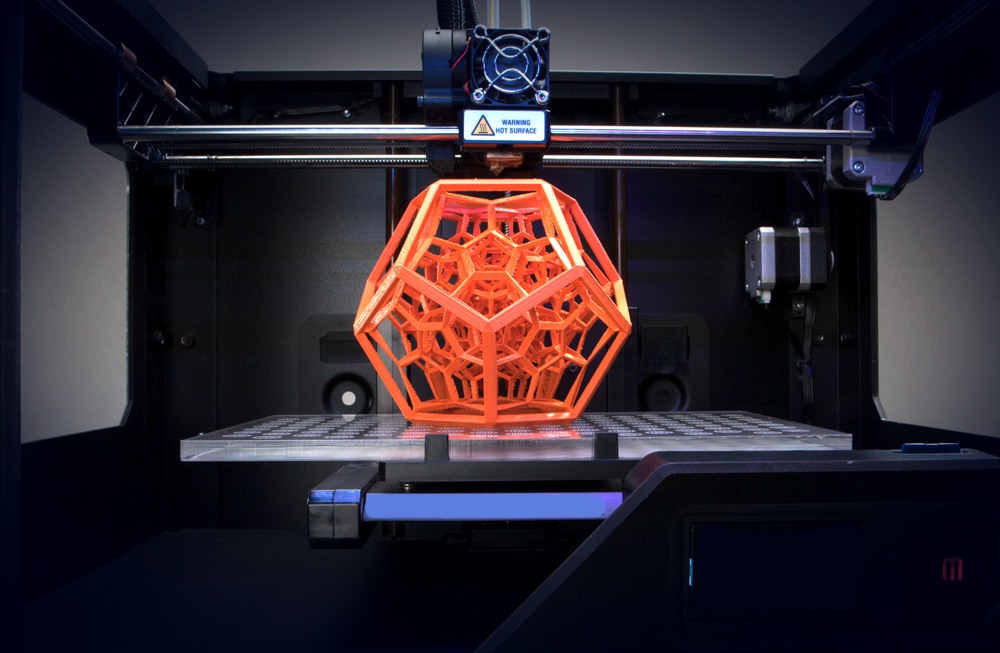
Science fiction is fast becoming science fact, and none more so than 3D printing, which is now being adopted as a production process for everything from buildings to aircraft components.
It’s like magic. Layer upon layer of heated plastic or metal is injected from the nozzle of a 3D printer onto a plate, where it builds up into a three-dimensional object. It makes for a wondrous sight to see a tool or a toy, a prosthetic limb or a spare part for a jet engine being produced before your eyes.
It’s a process that has the potential to transform both industrial production and the supply chain. Products can be made at a fraction of the cost of manufacturing processes such as forging, molding and sculpting, as there is no need to build special equipment to create each new product.
Already, 3D printing, or additive manufacturing, has moved beyond the experimental stage, and is being used in a variety of applications where often the parts are complex to produce or require high levels of customization.
Game-changer
DHL has investigated the future of 3D printing in an in-depth study that looks at the implications and uses of the technology across sectors and the supply chain.
The report – “3D Printing and the Future of Supply Chains” – concludes the technology will “undoubtedly be a game-changer in many industry segments” and will lead to improved product quality and, in some cases, completely new types of products. It highlights a number of use cases where 3D printing could have a disruptive effect and implications for the future of supply chains. Companies could team up with logistics providers offering 3D printing in areas such as “spare parts on demand,” which would enable them to save substantial amounts on storage; end-of-runway services, to enable fast production of parts that need to be put into operation in the shortest possible timeframe, or product postponement services to increase customization options but at the same time reduce lead time to the customer.
The promise for 3D printing comes as new industrial applications of the technology are springing up all the time. The report says Airbus has already introduced 1,000 3D-printed parts to its A350 airliner model. Each part weighs just half as much as the one it replaces, significantly reducing the weight of the aircraft.
Airbus has heralded a breakthrough by producing a partition wall for its planes through 3D printing. This product is billed as the world’s largest 3D-printed airplane cabin component. The partition wall, which fits between the passenger seating area and the plane’s galley, has a bionic structure, mimicking the structure of organic cells and bones. The new design dispenses with the weight, materials and bulk of older versions of the partition and is 45 percent lighter than previous versions. It is also much stronger, supporting the jump seats used by cabin crews. When installed in the fleet of A320 planes, Airbus claims it will save up to 465,000 metric tons of CO2 emissions each year.
Rocket Parts
Meanwhile, U.S. space program NASA is experimenting with ways of printing rocket parts, and has manufactured and tested 75 percent of the parts needed to build a 3D printed rocket engine. The turbo pumps, injectors and valves have been successfully tested together, suggesting it would be possible to build a 3D engine for landers, in-space propulsion, or the upper stages of the rocket engine. NASA has also manufactured 3D-printed objects on the International Space Station (see box).
General Electric (GE) has also made some big commitments to 3D printing. The industrial giant recently opened The Center For Additive Technology Advancement (CATA), producing 3D-printed parts such as fuel nozzles for jet engines. GE is investing $40 million in the facility, which will develop industrial applications for 3D printing across its businesses.
BMW Group has integrated 10,000 3D-printed parts into production of the Rolls-Royce Phantom. The complex geometry of some of the parts required lent itself to 3D printing, and they could be manufactured significantly faster than with traditional methods without any loss of quality. BMW is now planning to roll out 3D printing technology across its production range.
Meanwhile, Dubai’s Museum of the Future project has unveiled what it calls the world’s first 3D printed office building. A 3D printer was used to create the building layer by layer, using cement. It took 17 days to print the 250 square meter building at a cost of some $140,000. The printer used to make the building – including all interior furnishings and detailing – is 120 feet (36 meters) long, 40 feet (12 meters) wide and 20 feet (6 meters) high.
3D printing also has huge potential to help developing nations provide basic supplies to people living in remote areas. According to the DHL report, startup re:3D is donating a “Gigabot” to some of these communities to make clothing and other products on a day-to-day basis. Another firm, Field Ready, is collaborating with World Vision to establish an innovation lab in Nepal to produce 3D-printed supplies for relief camps – reducing aid agencies’ logistics costs by 40-50 percent.

 Admin
Admin
Leave A Reply
Your email address will not be published. Required fields are marked *